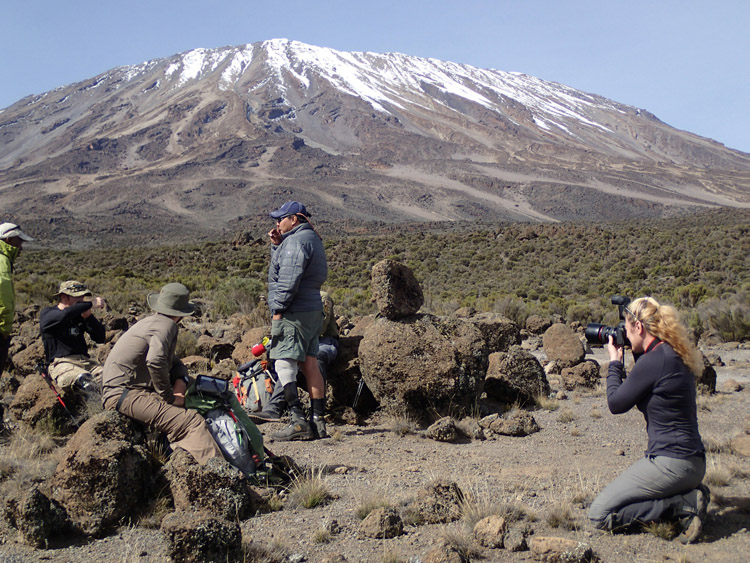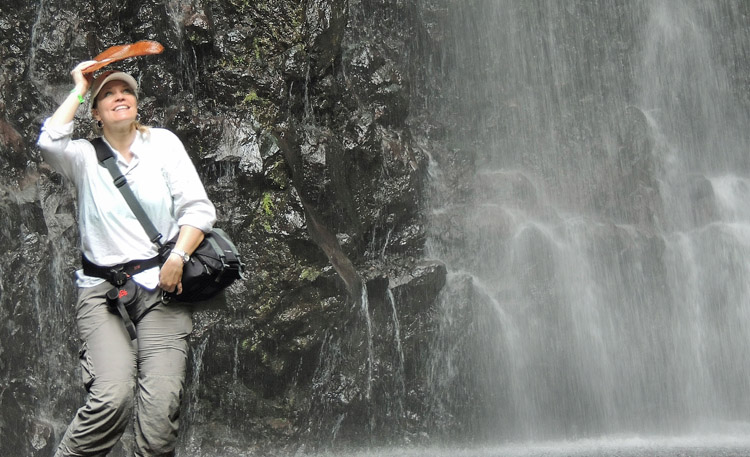Interviews & Profiles
Diver and Adventurer Idee Belau
Mar 11, 2014
Idee Belau, The Explorers Club’s Chair of the Florida Chapter, has a special fondness for all things water-related. She’s a highly experienced scuba diver, though she is equally adept on land, having successfully graduated from Boulder Outdoor Survival School’s seven-day field course. Idee is also heavily involved with the Combat Wounded Veterans Challenge Team, conducting expedition research photography, producing videos, and joining the team on physically demanding field challenges.

RailRiders: Describe some of your own experiences diving near shipwrecks.
Idee Belau: My first wreck dive was in 1998 on the Princess Anne, a ferry boat resting off the Florida coast. Her interior offered majestic cathedral-like swim-through areas with light streaming in between narrow slots from above, illuminating the fish as they darted through the beams of light. I have also engaged in wreck dives in many locations, with the most notable being the Caribbean’s largest shipwreck, the Antilla in Malmok Bay, Aruba. The Antilla has a colorful history, having been secretly scuttled by her own Captain during WWII.
RR: Find any gold and pirate treasures?
IB: They say dead men tell no tales, and the same can be said for treasure hunters. Most countries enforce strict maritime and preservation laws regarding removal of any type of artifact from wreck sites. That said, I haven’t recovered any gold or pirate treasure.
RR: Where are some of your favorite places to dive?
IB: I enjoy diving in Florida’s springs and grottos, and throughout the Caribbean region for its beautiful conditions and sunken history scattered on the sea floor.
RR: How safe is diving?
IB: Scuba diving, like any other adventure activity, is only as safe as the individual diver. Its principles and practices have been researched and refined since the early twentieth century. The safest divers are those who adhere to their training, know and stay within their limits, and dive with some regularity. Divers trained to undertake the highest risk specialties, such as cave diving, tend to be ‘sticklers’ about following proper procedure.
RR: There was that recent death by a freestyle diver in the Bahamas. He went too deep, and suffered internal bleeding. Have you ever dived there?
IB: You are probably referring to Dean’s Blue Hole in the Bahamas. That location is on my dive-bucket list. I know a number of dive instructors who insist that the site’s cylindrical shape tends to be disorienting with regards to perceived depth.
RR: What is your opinion of this extreme sport?
IB: My opinion of free diving is that it’s a pursuit to challenge one’s physiology. Scuba diving is different in that we’re not trying to challenge our physiology. Rather, divers work with inner-space’s environmental challenges in order to accomplish the objectives of the dive activity, such as photography, reef mapping, fossil recovery, or research.
RR: How far have you dived with and without scuba gear?
IB: My deepest dive with standard gear is at about 120 feet, and without about 20 feet.
RR: In your view, what has been the effect of climate change in your view with respect to marine life? Have you seen coral reefs dying due to warmer temperatures?
IB: I’m not a biologist, but in my view, climate change manifests its impact on marine life in a variety of ways. Extreme shifts in ocean temperatures can kill sensitive coral-based reef systems and misdirect pelagic marine animals relying on ocean currents. When the ocean experiences shifts that impact these levels of the food-chain, we see extreme expansions and contractions in mid-range animal populations. I follow NOAA's research on climate change impacts on coral health. A 2008 report notes the influence of Florida's 2005 hurricane impacts on local coral systems; as storm-induced fluctuations in water temperature occurred, corals bleached or grew at much slower rates as the water temperatures changed. These effects can still be seen in various southeast Florida reef systems.
RR: Ever had a close encounter with a great white shark?
IB: It was during a California cage-dive, which I recommend to any diver wanting to see these apex predators in action.
RR: Moving from sea to land, what was it like going through the Boulder Outdoor Survival School course?
IB: BOSS is a challenge that expands one’s concept of their personal limitations, teaches survival skills not requiring modern technology (time pieces, GPS) or luxuries such as tents or toilet paper, and helps graduates develop a sense of accomplishment, confidence, and perspective. Their overarching principles are “do more with less” and “leave no trace”.
RR: Please explain your involvement with the Combat Wounded Veterans Challenge Team. What type of challenges do the vets undertake?
IB: My involvement with the CWV ranges from expedition research photography, producing team videos, and responding to media outlet requests for expedition footage. To accomplish these duties, I join the team on physically demanding field challenges, the larger of which are sanctioned by The Explorers Club through the Explorers Club Flag. We conduct first-ever underwater research wherein we collect data through underwater photography and video of the veteran subjects using their prosthesis to engage in activities like coral restoration and shipwreck diving. The team has also taken on two 7 Summit mountaineering challenges: Denali in 2010, Kilimanjaro Summit in 2013, and in early 2015 our third will be Argentina's Aconcagua, the highest peak in the Americas. Our team's goals are, through these expeditions, to inspire other wounded soldiers now in recovery, to provide data for wound-recovery and prosthetics research, and to serve as a source of therapy for the team's participants. To prepare for these expeditions, the CWV participants engage in extensive physical training, hospital visits, publicity events, and extensive fundraising.

RR: Finally, what do you think of RailRiders Adventure Clothing?
IB: Through expeditions ranging from caving in the Mojave Desert on a NASA Mars research expedition to days on the open water in the Florida Keys and high altitude rocky landscapes of Kilimanjaro, RailRiders has made the journey. As a field researcher who carries more weight in camera gear than clothing and hygiene products, I need reliable, comfortable, and rugged clothing. My pack has no room to carry extra pants in case of ripped seams or broken buttons. My RailRiders adventure pants and shirts out-perform mainstream brands and will continue to be my preferred travel gear for many adventures to come.
